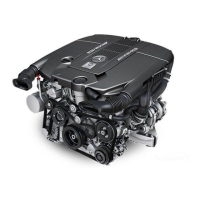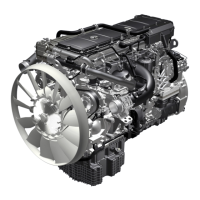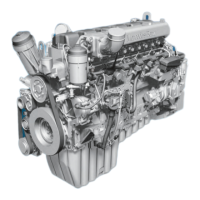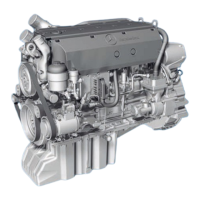Functional Description of EGM
_____________________________________________________________________
Status September 2003 (EvoBus-Service / AFT) Page: 37 of 83
2.5.3 Lambda control
The M 447 hLAG is a lean engine with lambda control. The lambda controller integrated in the EGM is
responsible for compliance with the pre-programmed target lambda in all engine operating points. During
idling the target lambda is equivalent to approx. 1.2, however is changed by the EGM in dependence on
the control deviation by up to ± 0.2 as needed. The target lambda in partial-load operation is dependent
on the engine speed and the air mass. The target lambda lies in the range of approx. 1.1 to 1.6.
Target lambda in partial-load operation
To measure the real actual lambda, a lambda probe (broadband probe) is integrated in the exhaust
system between the turbocharger and the catalyst. Input variables of the lambda controller are the target
lambda and the actual lambda. The lambda controller supplies the lambda correction factor. This is
integrated in the calculation of the gas mass. As a result, the lambda controller can ensure compliance
with the target lambda by correcting the injected gas mass. A positive lambda correction factor means
that – always starting from the target lambda dependent on the operating point – the combustion is too
lean so that the engine control must inject gas as a reaction. Conversely, a negative lambda correction
factor means that the combustion is too rich, i.e. too much gas is injected.
GAP - Basic adjustment (LOW-gas)
Factor injection (LOW-gas) [.] = f(Speed[rpm], filled air mass [g/stroke]
Speed
Air mass

